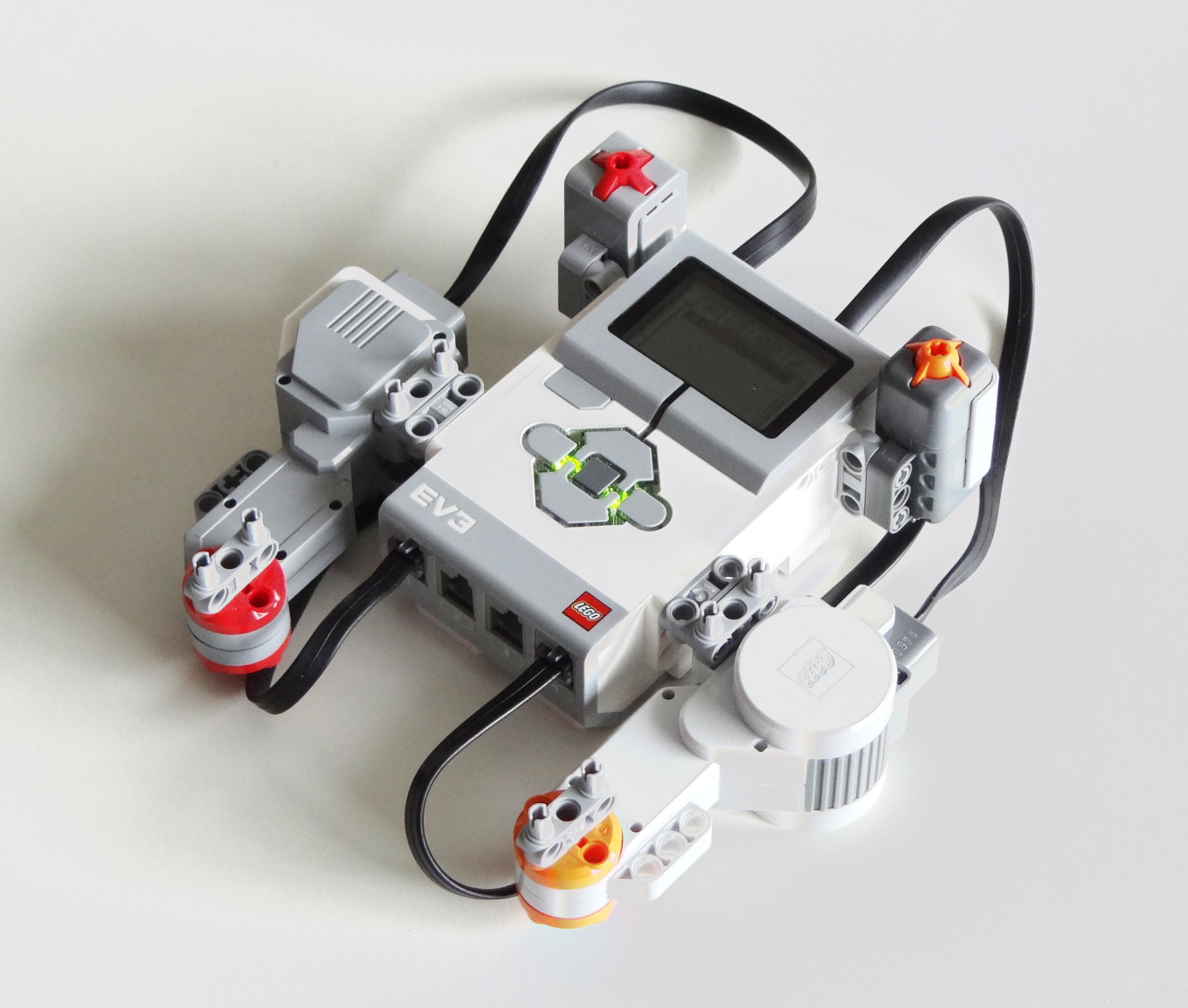Lego Mindstorms Nxt Rbt

Robot based on the NXT platform Subject Availability 1998 ( 1998)– Lego Mindstorms is a hardware software platform produced by for the development of programmable robots based on. Each version of the system includes an intelligent brick computer that controls the system, a set of modular sensors and motors, and parts from the line to create the mechanical systems. Since creation, there have been four generations of the Mindstorms platform: the original Robotics Invention System, NXT, NXT 2.0, and EV3. With each platform release, the motor and sensor capabilities expanded. The latest system,, was released on September 1, 2013. Some robot competitions use this set, such as the and the. Contents • • • • • • • • • • • • • • • • • • • • • • • • • History [ ] The hardware and software roots of the Mindstorms Robotics Invention System kit go back to a programmable brick prototype created at the in 1987, based on the.
Lego Mindstorms NXT - The Beer Machine Final. Lego Mindstorms NXT fire fighting robot project using behavior based architecture with java. Open the Lego Mindstorms Edu NXT software. The program may have the following form and is based on the 'Wait. Light' block.
Sai serial sony. Intel E7520- and Intel E7320-based platforms can be designed to support any of three memory technologies: DDR 266, DDR 333 or DDR2-400. DDR2-400 memory technology is ideal for HPC and memory-intensive applications, providing up to 20% increase in memory bandwidth over DDR 333 and up to a 40% decrease in power consumption. Tec hnology and Streaming SIMD Extensions 3 (SSE3) Instructions. Another option is the Intel. The PCI Express interfa ces directly attach Intel and third- party components to the MCH at speeds up to 4 GB/second on each x8 interface.
A second prototype series was developed in the mid-1990s before the final device was released in 1998. The first visual programming environment was called LEGOsheets, since it was created by the in 1994 based on. Mindstorms is named after the book. Robotics Invention System [ ] RCX [ ]. First-generation RCX programmable brick. The first generation of Lego Mindstorms was built around the RCX (Robotic Command eXplorers) brick. It is based on the 8-bit, including 32KB of ROM for low-level IO functions, along with 32KB of RAM to store high-level firmware and user programs.
The RCX is programmed by a program using a dedicated interface. After the user uploads a program, the RCX can run it on its own without needing access to a computer. Programs may take use of the IR interface, enabling several RCX bricks to communicate, in addition to three sensor input ports and three 9V output ports. A built-in can display the battery level, the status of the input/output ports, which program is selected or running, and other information. Version 1.0 RCX bricks feature a power adapter jack rather than solely batteries.
In version 2.0 (as well as later 1.0s included in the RIS 1.5), the power adapter jack was removed. Power-adapter equipped RCX bricks were popular for stationary robotics projects (such as robot arms) or for controlling.
In the latter context, the RCX might be programmed with (DCC) software to operate multiple wired trains. The IR interface on the RCX is able to communicate with,,, and the NXT (using a third-party infrared link sensor). The RCX 1.0 IR receiver is 38.5 kHz, while the RCX 2.0 IR carrier frequency is 76 kHz. Both versions can transmit on either frequency. The RCX communicates with a computer using a or IR tower.
As the RCX is discontinued, support for the interface is limited on more recent operating systems than Windows XP. All versions of the RCX have a unique number printed on it, which could be registered on the now-defunct Lego Mindstorms RCX website. This was necessary to obtain technical support. The first RCX produced is marked '000001' and was on display at the Mindstorms 10th Anniversary event. Programming languages [ ] Lego Mindstorms' programming is command box programming, rather than code programming.
-supplied languages: • RCX Code (included in the Mindstorms consumer version sold at toy stores) • ROBOLAB (based on and developed at ) Popular third-party languages: • ev3dev: A operating system from for EV3. Allows programming using many languages including with additional libraries. • GNAT GPL: Allows programming NXT using the language for real-time and embedded programming. •: A port of Java •: (NXC), an open-source C-like, •: (NQC) • Robot C: (NXC), a MIT created language •: Simple educational scripting language for virtual and LEGO NXT robots. • ROBOTC: C-based programming language with an easy-to-use development environment.
• Simulink: Graphical signal-processing and control-design tool from which C code is auto-generated and deployed onto the NXT. •: Extensions to •: Version of •: Via the interface supplied on the CD •: TurtleBots provides a visual programming environment oriented to blocks. Lego camera [ ] The Lego camera on its own is technically not a robotic toy; rather, it is a normal (a Web) packaged into a Lego shell. Being a normal webcam, the Lego camera is, unlike most Mindstorms products, not programmable and is only usable connected to a PC or some other device that supports webcams. The Lego camera is meant to be used with the included Vision Command software which can also interface with an RCX and thus enables creating robots with 'vision'. The software is capable of detecting different lightings, motion, and colors.